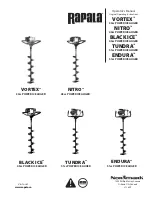
WARNING!
When connecting the G-Natural
outputs to microphone inputs on a mixing console,
the phantom power for these channels MUST be
switched off! Otherwise you may damage the
G-Natural circuits.
Basic settings
•
If the connected microphone is a condenser type,
phantom power must be switched on
•
Set input sensitivity via the levels menu.
•
Select active effect pressing the COMP, MOD,
DELAY and REVERB switches
•
G-Natural features separate EQ and compression
settings for mic and instrument inputs
It is a generally accepted fact that the best way of
capturing the sound of an acoustic guitar is done using a
dynamic or condenser microphone. However, in live
situations where the sound level on stage can be loud it
is not advisable to only use these types of microphone.
If conditions allow it, a combination of an active* piezo
system and a microphone may be the perfect solution.
This scenario is handled perfectly with G-Natural.
Connections
•
Connect the output of your guitar’s piezo pickup to
the instrument input of G-Natural
•
Connect the microphone to the mic input of
G-Natural
•
Connect L/R outputs to a mixer or to a dedicated
acoustic guitar amp
TYPICAL SETUPS
12
Guitar with piezo pick-up and dynamic microphone
MIXER
Instrument
input
Microphone input
algorithm select
mod
delay
menu
subdiv
comp
EQ
boost
reverb
BANK UP
BANK DN
COMP
1
2
3
MOD
DELAY
BOOST
/TAP TEMPO
REVERB
store
levels
G•NATURAL
factory
default
4
3
2
1
VARIATIONS
hold to save
boost
flanger
plate
p.pong
stomp
EQ
chorus
room
reverse
dynam
tape
vibrato
analog
detune
clean
thicken
studio
tremolo
hall
spring
3
3
+
+
+
Decay PreDly Color MixMM
1.2s
250ms
100%
25%
edit
A
edit
B
edit
C
edit
D
preset bank | tune
Guitar with an
active pick-up system
LR outputs
* If the pickup system requires the use of a battery the
system is active.















































